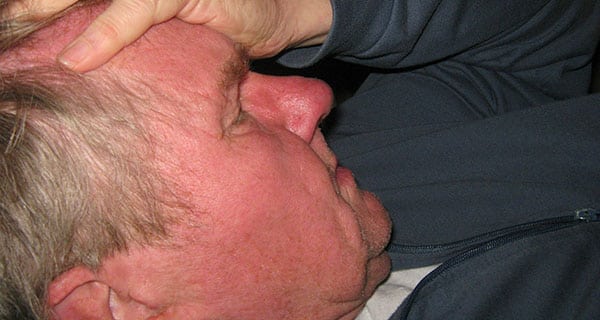 If you experience migraine headaches, then you know what it’s like to have debilitating pain.
If you experience migraine headaches, then you know what it’s like to have debilitating pain.
Pain pulsates on one side of your head like a bad drum beat that won’t stop. All the noises around you are magnified to a chaotic cacophony and every time you move the pulsing in your temples seems to intensify. You know you can’t even try to eat lunch because the smell or even the thought of food makes you nauseous. Two Advil tablets doesn’t begin to slow the monster in your head.
Indeed, if you experience migraine headaches you understand what it means to be incapacitated with pain that takes over. Simple routines like going to work or attempting to concentrate are nearly impossible.
Millions of North Americans experience this on a semi-regular basis and a lot of them have never received satisfactory help from a doctor. When the migraine comes, a lot of people simply prepare to spend a couple of days in bed.
A tension headache is not a migraine
Actually, studies have shown that approximately half of the people who experience migraines have never been diagnosed by a physician, and less than half of those who have been diagnosed use prescription medication to deal with the pain.
Part of the problem is that most people who visit the doctor with chronic headaches are told they experience tension headaches even though a full 90 per cent of those people also meet the diagnostic criteria for the more severe migraine.
Tension headaches are thought to be the most commonly experienced. They often involve symptoms such as neck and shoulder stiffness and are thought to be brought on by stress. Often, they occur after the stress has subsided and the headache might have a pressing, tightening quality.
Unfortunately, the lines distinguishing between tension headaches and migraines are not as solid as was once thought.
While migraines can be triggered by a number of factors including alcohol, environmental factors such as temperature or pressure changes, foods such as MSG or caffeine, hormonal changes, hunger, or lack of sleep, they are most commonly triggered by stress just as tension headaches. Muscle tension is also common for migraine sufferers.
When treating tension headaches, over-the-counter pain medications such as acetaminophen and ibuprofen are usually all that is needed. In many cases, these are not enough to stop the pain of a migraine. Specific prescription medications called triptans are the most effective for severe migraine pain, but are not prescribed for tension headaches.
Migraines common among people with mood disorders
Migraines are very common in people with mood disorders such as depression or bipolar disorder. In fact, people with bipolar disorder as twice as likely as the general public to have migraines. Migraines affect roughly half of all people with depression or bipolar disorder. One recent study found that people with type II bipolar disorder are even more likely to also suffer from migraines; in this study 82 per cent of type II patients also had migraines.
People who suffer from migraine headaches are also more likely than others to have an anxiety disorder.
For people who experience migraine headaches as well as a mood disorder, the headaches often improve once the mood disorder is treated.
If you have migraine headaches and your life is disrupted by them, visit your family doctor and learn about treatment options. You don’t have to suffer needlessly.
Dr. Latimer is president of Okanagan Clinical Trials and a Kelowna psychiatrist.
The views, opinions and positions expressed by columnists and contributors are the author’s alone. They do not inherently or expressly reflect the views, opinions and/or positions of our publication.
This site is Powered by Troy Media Digital Solutions


